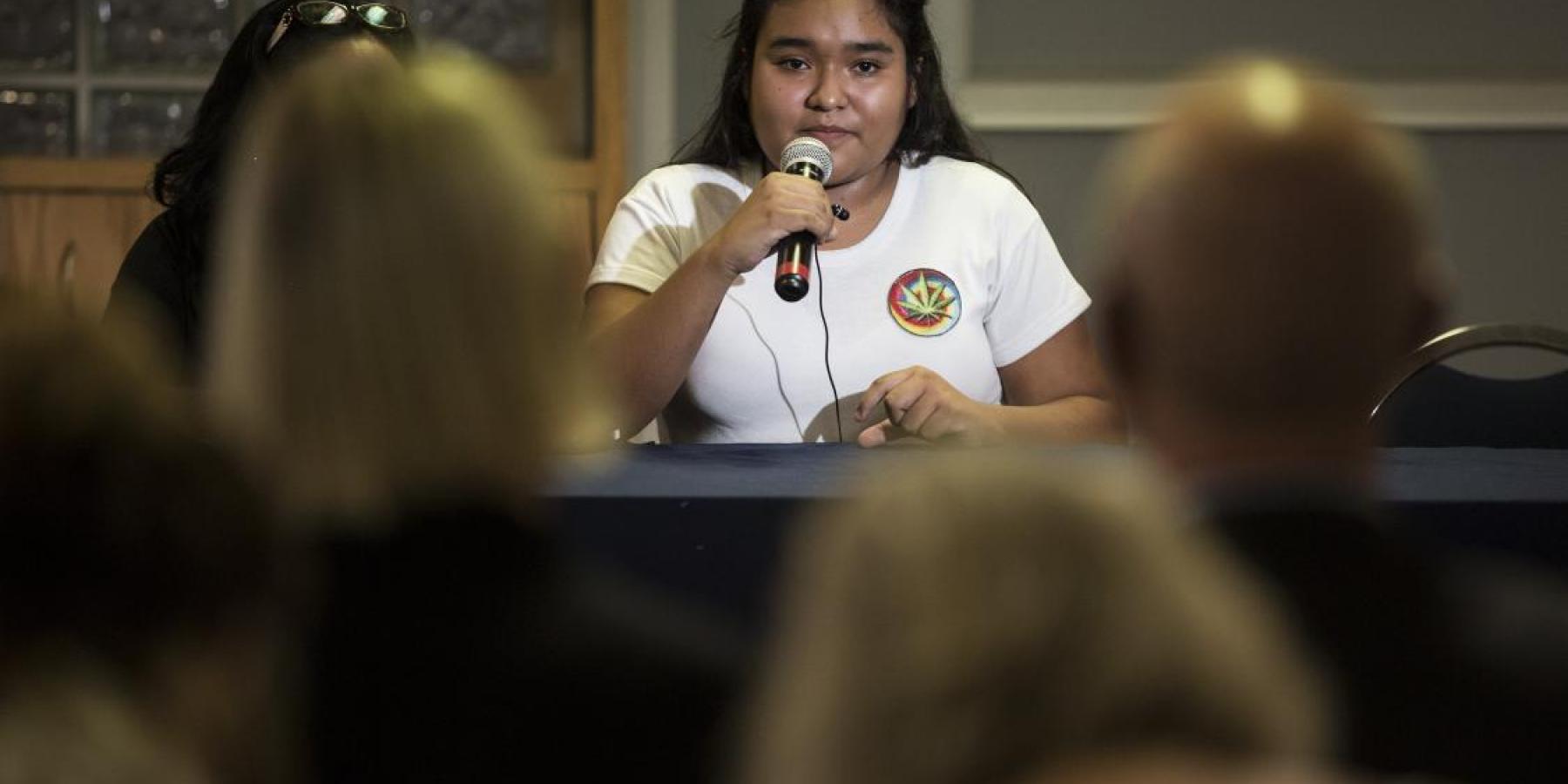120 million premature deaths - How many more reasons do we need for action?
18th October 2017

18th October 2017
Imagine the year 2025. Just 8 years from now, we will reach that milestone year that governments set for NCDs. Reducing preventable mortality by a quarter was and remains the aspiration. But if we continue down the road we are currently travelling, the reality will be very different.
These are not just numbers. They are people, with families, stories, and a right to live long and healthy lives. But accidents of geography and poverty are still tragically cutting lives short.
Let me share with you two stories of young people living with or dying from NCDs, Leticia from Mexico City, and Robert from western Uganda.
Last week I met a 14-year-old girl, Leticia, in Mexico City, living with morbid obesity and on the way to developing type 2 diabetes. She is at the age when her biggest worries should be whether she gets her homework in on time and what music to play to impress her friends. Instead she faces the decision of undergoing major bariatric surgery to avoid serious long-term health consequences, or dramatically changing her diet and the way she lives.
She told her story of growing up in a city where drinking soda is the norm over water, and where only junk food is affordable for the poor. Her story epitomises that of so many around the world, where the health of children and adolescents is determined by where they are born, the environments they live and play in, and strong commercial drivers that quash any sense of agency in making healthy choices.
14 year old Leticia's biggest worry should be getting her homework in on time, not contemplating complex interventions to reverse morbid obesity.
From Mexico let’s move to Kasese, a mountain district in western Uganda. Robert, a 16-year-old boy suddenly became very ill and lost a lot of weight. His parents, who were poor farmers with several other children, grappled with what to do. The nearest clinic was a long journey away, and treatment costs could topple the family deeper into poverty. Overwhelmed with such conflicting priorities, they decided to leave Robert by the road to die.
Robert had undiagnosed type 1 diabetes – treatable in the developed world, but a death sentence for thousands of children every year in developing countries. Poor families are still being forced to make Sophie’s Choice: do they use their scarce household income to buy insulin for one child or to feed the rest of the family? No parent, anywhere, should be forced to make that decision.
With diabetes awareness low, and care and treatment difficult to access and afford, 16 year old Robert was left on the side of a road to die.
Against this backdrop of numbers and human stories, you would assume that the sense of injustice would have set in. That global cooperation and national leadership would be full steam ahead. That funding would be flowing to the most vulnerable.
In the face of the global health tsunami that is NCDs, it seems that everything proceeds at glacial speed.
Please let me be clear. What I highlight here isn’t just rhetoric - on the ground, where children, adolescents, men and women live and die, very little is changing. We are tired of empty promises. Governments are failing their populations and sleep walking into a sick future.
To end, I have one message for governments. We don’t need a paradigm shift.
What we need is a wake-up call. A wake up call for
And we have a golden opportunity, with the 2018 UN High Level Meeting on NCDs, for governments to heed this call.
The alternative is unacceptable. More than 120 million lives will be lost prematurely from NCDs between now and 2025. How many more reasons do we need for action?
Governments are failing their populations and sleep walking into a sick future. How many more reasons do we need for action on NCDs?
Katie Dain (@KatieDain1) is the NCD Alliance CEO. She has worked with NCDA since its founding in 2009. Her experience has included organisational and strategic development; global advocacy and policy-making; and program design and capacity-building in low- and middle-income countries. Katie is widely recognised as a leading advocate and expert on NCDs, and has authored or co-authored numerous papers and commentaries on global health and development policy issues.
(1) http://www.obesityday.worldobesity.org/
(2) NCD Risk Factor Collaboration (NCD-RisC). Worldwide trends in body-mass index, underweight, overweight, and obesity from 1975 to 2016: a pooled analysis of 2416 population-based measurement studies in 128·9 million children, adolescents, and adults. Lancet 2017.
(3) Based on IDF estimate that in 2015, 415 million adults had diabetes and that by 2040, 1 adult in 10 (642 million) will have diabetes. IDF Diabetes Atlas, 7th Edition, International Diabetes Federation, 2015
(4) Based on WHO estimate of 40 million deaths from NCDs in 2015, of which 15 occur in the 30-69 age bracket, and increasing deaths in the next 8 years until 2025. http://www.who.int/mediacentre/factsheets/fs355/en/
(5) Who Global Status Report on NCDs. World Health Organization, 2014.